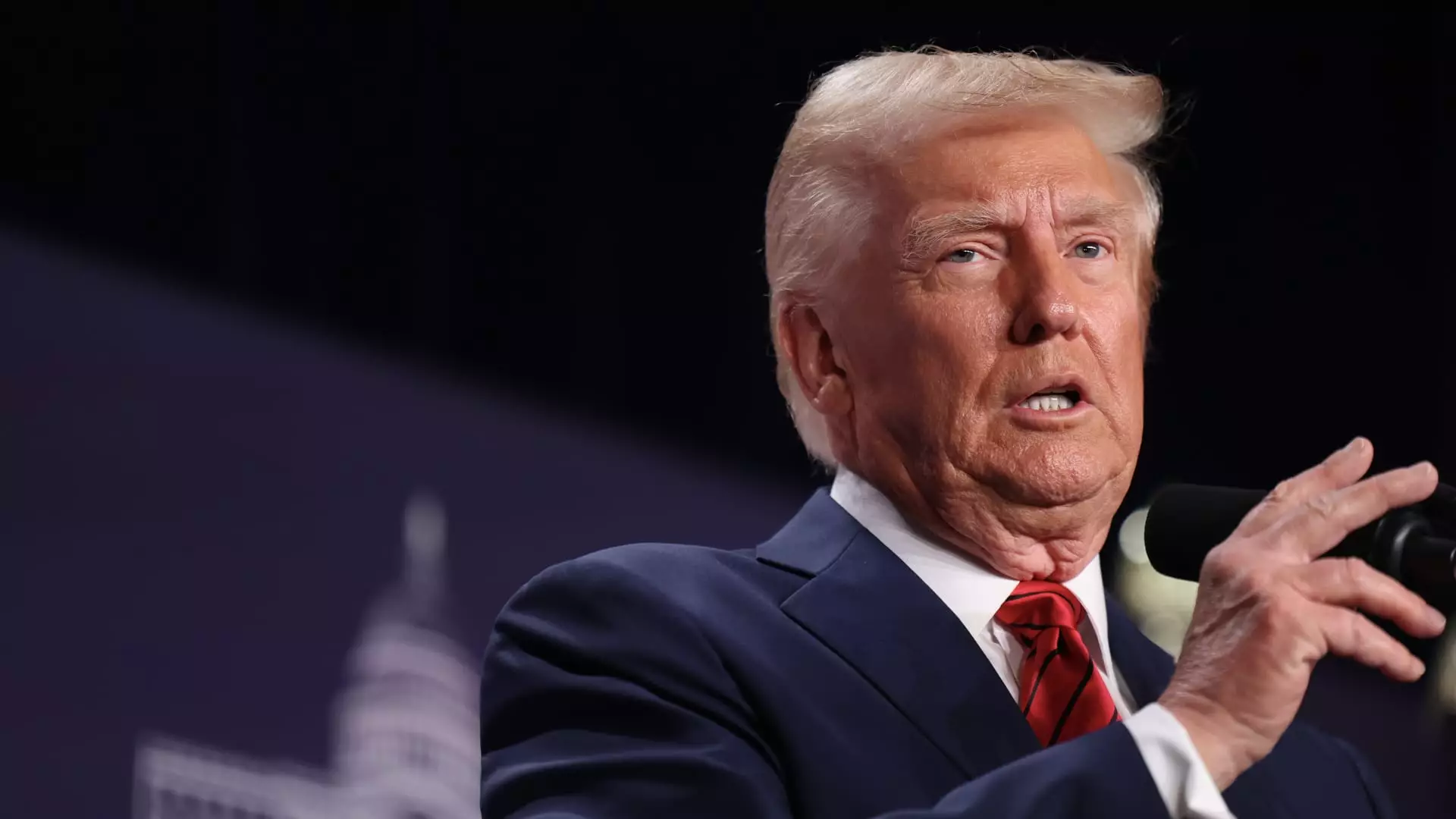The Trump administration has maintained a strong focus on imposing tariffs as a key component of its trade strategy, a stance that dates back to Donald Trump’s presidential campaign and has continued since he took office. The administration’s plans to impose tariffs on goods imported from major trading partners such as Canada, China, and Mexico are poised to begin rolling out soon, with notable increases set for February 1. As anticipation builds around these tariffs, economic experts are examining their potential consequences. Most agree that the resultant financial impact on U.S. consumers is likely to be negative.
Mary Lovely, a senior fellow at the Peterson Institute for International Economics, emphasizes the lack of positive outcomes from tariffs. As tariffs represent a tax on imported goods that American businesses pay, it is highly probable that these added costs will ultimately be passed on to consumers. For instance, a significant 25% tariff on imports from Mexico and Canada, alongside a 10% tariff on Chinese goods, means consumers could face elevated prices for everyday products. This financial burden could further diminish brand variety available in stores, as fewer products from these trading partners may make their way into the U.S.
Despite the looming tariffs, uncertainty remains regarding their implementation. Questions arise as to whether certain imports will be exempt from these new duty rates. For example, President Trump hinted that Canadian oil might be an exception during a recent announcement. Such exemptions could alter the dynamics of tariffs and possibly mitigate some negative impacts on U.S. consumers. Ongoing discussions about these specifics highlight the administration’s attempts to balance protectionist measures with the necessity of maintaining consumer welfare.
Mark Zandi, the chief economist at Moody’s, suggests that this uncertainty indicates room for adaptation within Trump’s tariff strategy. By considering exemptions for particular goods such as fruits, dairy products, and clothing, the White House could soften the blow for American shoppers. Nonetheless, the lack of clarity surrounding the tariff structure poses challenges for both consumers and businesses that depend on international trade.
While the White House claims that these tariffs will bolster the U.S. economy, many economists express skepticism regarding this view. They argue that the adverse effects of these tariffs can far outweigh any potential benefits. Historical analyses undertaken by groups such as the Committee for a Responsible Federal Budget indicate that imposing substantial tariffs may yield substantial revenue—upwards of $1.3 trillion by 2035—but this income will not compensate for the economic downturn anticipated due to retaliatory actions from other countries.
Differences in economic perspectives surround whether tariffs will boost job growth or conversely precipitate their decline. The administration promotes the idea that tariffs work alongside tax cuts and deregulation to incite job and wage growth; however, most economists remain unconvinced. Analysis from institutions like the Peterson Institute warns of the broader economic ramifications, estimating that a 10% tariff on China alone could lead to a $55 billion contraction in the U.S. economy during Trump’s second term.
The economic ramifications of these tariffs will most likely extend to the general consumer. Since a substantial portion of items imported from China comprises essential consumer goods—like clothing, electronics, and toys—these tariffs will directly impact American households. In fact, economists estimate that a sweeping 20% tariff could inflate household expenses by as much as $3,000 annually. This financial strain, compounded by indirect costs stemming from increased prices in domestically manufactured goods that utilize tariffed materials, paints a bleak picture for consumers.
Food prices too are likely to rise due to tariffs on imports from Mexico and Canada, which are vital suppliers of agricultural products. This scenario is concerning given that these nations cover nearly half of the U.S.’s vegetable imports and significant proportions of prepared foods. Additional industries, including transportation, machinery, and the energy sector, could also feel the weight of these tariffs.
The possibility of retaliatory tariffs looms large as well, particularly concerning China’s history of responding to U.S. tariff measures. Analysts caution that we may find ourselves in an escalating trade war, where the U.S. could witness retaliatory actions that hamper American exporters. The interconnected nature of the global economy means that domestic industries face vulnerability when international relations strain.
At the end of the day, the overarching takeaway is that while tariffs have been hailed by the Trump administration as a tool for sustaining and creating American jobs, the consensus among economists suggests that the actual results will likely differ. As the tariffs are implemented, the uncertainty surrounding the economic implications will only further aggravate feelings of apprehension among consumers and businesses alike. The upcoming months will undoubtedly reveal the overarching consequences of this bold trade strategy, one with significant implications for the American economy and its citizens.

